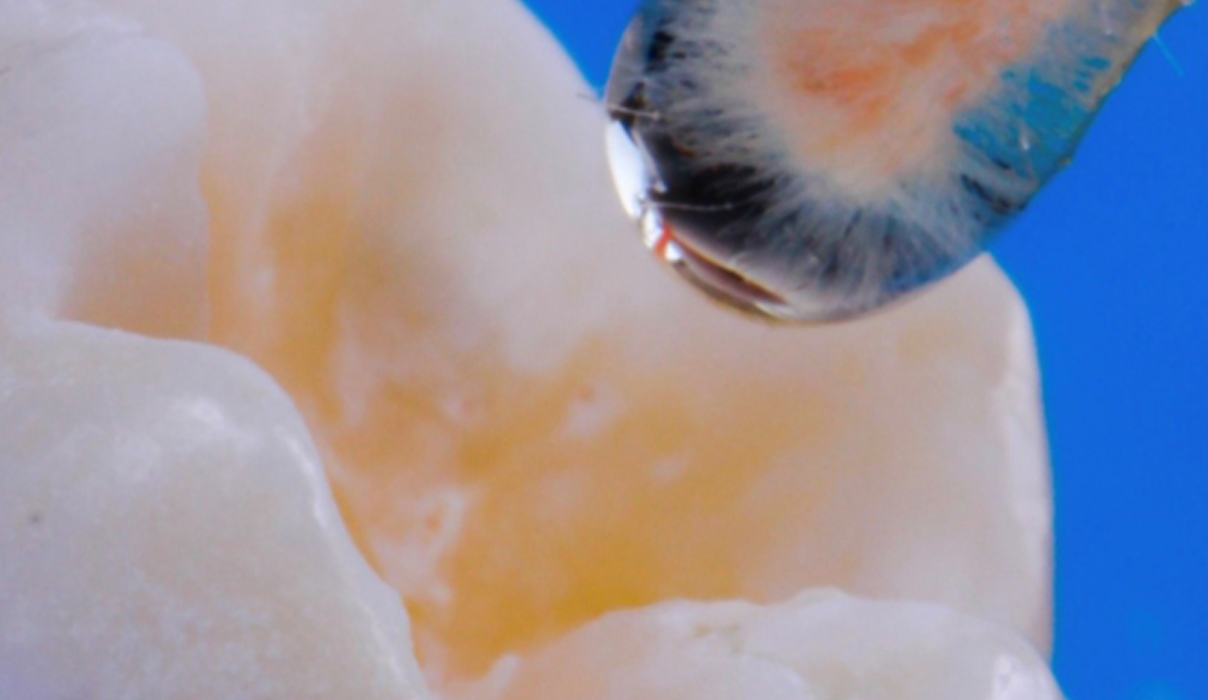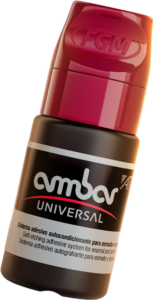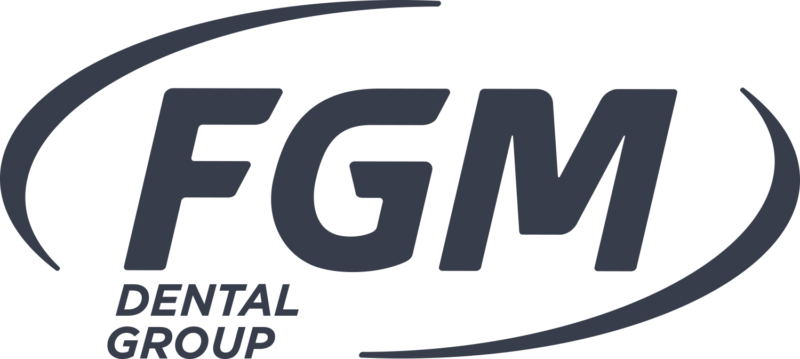
Adhesive Systems have revolutionized aesthetic dentistry, offering dentists the possibility to provide restorations with better aesthetic quality and greater preservation of healthy tooth structure. The effectiveness of a dentin adhesive system is directly related to its sensitivity to technique (operator effect) and to the structural and biological variations of the substrate in different clinical situations.
Unlike enamel, every dentin surface should be considered a different adhesive substrate. Adhesion and sealing of the dentin surface are achieved through the formation of a homogeneous hybrid layer (diffusion adhesion, where one substrate penetrates or diffuses into the other, forming a hybrid zone or layer comprising a mixture of both: dentin/resin interdiffusion zone or layer), continuous and uniform. The quality of this sealing is not related to the thickness of the hybrid layer, but directly related to the efficiency of monomer penetration into the interfibrillar spaces, the complete involvement of collagen fibrils exposed by acid conditioning (mixed or hybrid layer composed of collagen or organic phase of dentin interpenetrated by the adhesive system and inorganic phase of dentin) and the degree of conversion of the adhesive. Secondly, there is the penetration of the adhesive system into the dentinal tubules opened by acid conditioning (micromechanical retention). Since dentin is a water-rich structure, ways to make adhesive formulations (which are hydrophobic) compatible with this structure need to be found. Solvents facilitate the penetration of monomers between the interfibrillar spaces and improve their compatibility with the moisture of the dental structure, as well as decrease the viscosity of the adhesive.
After the application of the adhesive, the evaporation of solvents with gentle air jets is a crucial step because their presence inhibits the polymerization of the adhesive film, thereby compromising its mechanical strength. If the adhesive system is applied and promptly photoactivated without waiting for sufficient time for proper solvent evaporation, it will not polymerize properly, leading to negative consequences that compromise bonding, affecting adhesive strength and sealing, postoperative sensitivity, and early degradation of the adhesive interface. The active application of adhesives on the dentin structure contributes to solvent evaporation and also enhances monomer penetration. The collagen present in dentin acts like a sponge, and the agitation of the adhesive makes it penetrate more deeply, increasing the longevity of the adhesive interface.
The purpose of applying more than one layer of adhesive is to increase immediate bond strength. When two layers of adhesive are applied, solvent evaporation occurs between each layer, causing the concentration of monomers to increase after each application. This facilitates infiltration with minimal increase in the thickness of the adhesive layer.
There is an increased ability to penetrate demineralized dentin, either due to the increased availability of monomers for infiltration or due to the extended application time, which also means more time for solvent evaporation.

More recently, universal adhesive systems have emerged that, especially in dentin, eliminate the need for acid conditioning and reduce the risk of the ‘operator effect’ in terms of variation in the effect of acid conditioning on different types of dentin (young, sclerotic, deciduous, permanent, shallow, medium, or deep), methods of washing and drying (we should not leave excessive moisture or dehydrate the dentin), which have variable clinical criteria. As a result, variations in these critical steps are eliminated when using these adhesive systems.
Due to the importance of adhesive procedures in everyday dental practice, the dentist must keep in mind that adhesive bonding will only be reliable when executed under strict control and a well-defined protocol. In this way, knowledge of substrate behavior, technique, and the employed system are fundamental to ensuring the success and durability of restorative treatments.
References
- Oliveira NA De, Diniz LSM, Svizero N da R, D’Alpino PHP, Pegoraro CACC. Sistemas adesivos: Conceitos atuais e aplicações clínicas. Rev Dentística Line 2010;9:1–9
- Tay FR, Pashley DH. Dental adhesives of the future. J Adhes Dent. 2002; 4(2): 91-103.
- Carvalho CN, Lanza MDS, Dourado LG, Carvalho EM, Bauer J. Impact of Solvent Evaporation and Curing Protocol on Degree of Conversion of Etch-and-Rinse and Multimode Adhesives Systems. Int J Dent. 2019;2019:5496784. Published 2019 Apr 11. doi:10.1155/2019/5496784























